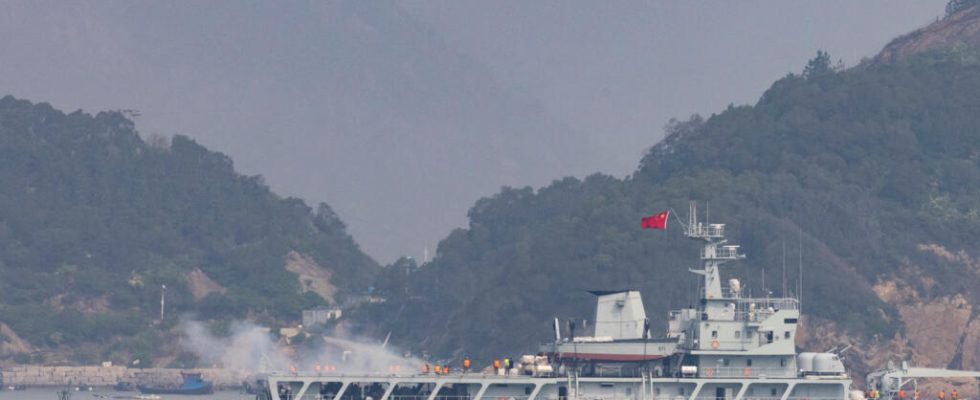China simulated bombings against key targets in Taiwan this Sunday, April 9, on the second day of a total encirclement exercise on the island. These maneuvers will continue on Monday with live fire exercises. Interview with Peer de Jong, former colonel, vice-president of the Themiis training institute dedicated to stabilization and return to peace activities.
RFI: What is Beijing trying to demonstrate with these military maneuvers?
Peer de Jong: The total encirclement exercise is intended to demonstrate that China is capable of putting in place a total blockade around the island of Taiwan. This is why this exercise brings together a good dozen large boats of all kinds, planes, aircraft…
This area is extremely American, with the US 5th Fleet cruising the region and alliances with Japan, South Korea and Taiwan. This set around Taiwan is a center forward totally controlled by the Americans. Any Chinese intrusion in this area stirs up the entire military system, which is extremely heavy, since the United States somehow considers the Pacific as their “mare nostrum” (“our sea”, in Latin). We are once again witnessing, between the American eagle and the Chinese dragon, a kind of round of observations in a framework that is extremely complex to grasp.
What are simulated firing exercises against key targets?
It is an exercise that is played at two levels. The first concerns the total isolation of Taiwan. The second aims to demonstrate that anyone approaching Taiwan and trying to escape would be automatically destroyed by these precision shots. This is what the Chinese will try to demonstrate with these simulations of firing against key targets.
Taiwanese targets that could be hit by Chinese weapons could be infrastructure, command posts, troop concentrations, protection systems… Because Taiwan is an extremely well-protected island with a whole network of bunkers, underground … And the Chinese are probably trying to find out more. All this Taiwanese defensive installation could therefore be attacked in a first salvo. The notion of precision is very important. There, the missile shots are fired to within a few tens of meters.
► To read also: China simulates strikes against “key targets” in Taiwan
After the exercise of total encirclement of the island, the Chinese army launches live fire exercises on Monday. What are the potential targets and what are the risks incurred during such maneuvers?
When we test nuclear submarines, missile launches, it’s often live fire. Regularly, all the armies in the world carry out live fire and this happens at sea.
But when a boat tests its missiles, it launches one or two – sea-to-land or sea-to-sea missiles, for example – which fall in international waters, so there’s nothing to talk about. The problem is that [les Chinois] will try to fire these missiles as close as possible to Taiwan’s exclusive economic zone. What is to be feared is the shooting accident.
With this exercise, the Chinese want to demonstrate that they have very high precision weaponry and targets that have been set up in the Taiwan Strait, which is right between China and Taiwan. They will therefore try to demonstrate that they know how to shoot at several hundred kilometers in an extremely precise way on these targets which “will have been proposed or demonstrated” before.
The operation dubbed “Joint Sword” mobilizes destroyers, fast missile launchers, fighter planes, tankers and jammers. Why are jammers so important in this exercise?
Jammers have a double activity. The first is to jam all means of communication. This is very important when you want to “dominate” your opponent. Then, the jammers jam everything related to the missiles and their trajectory, that is to say the response. With this exercise, the Chinese will theoretically study the capacity of the Taiwanese defense.
In the event of a real war, the Taiwanese system of anti-missile, anti-aircraft, anti-surface ship batteries… could retaliate hundreds of kilometers against Chinese ships. Ihe objective of the exercise is to demonstrate that the jammers would make this potential Taiwanese response almost impossible.
